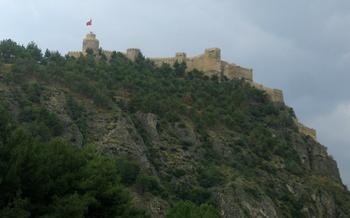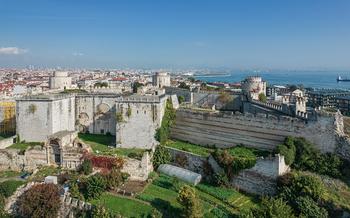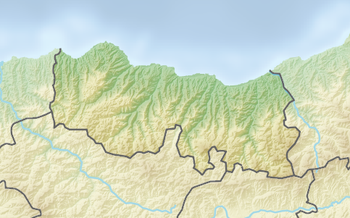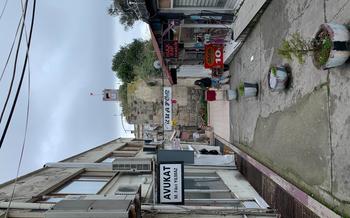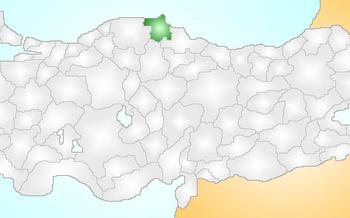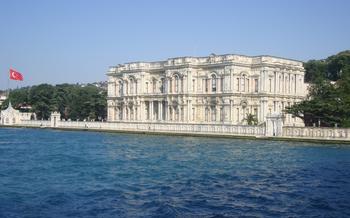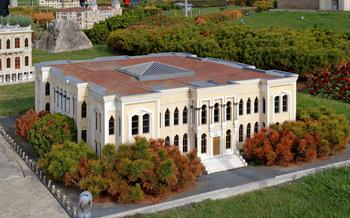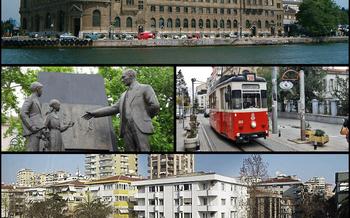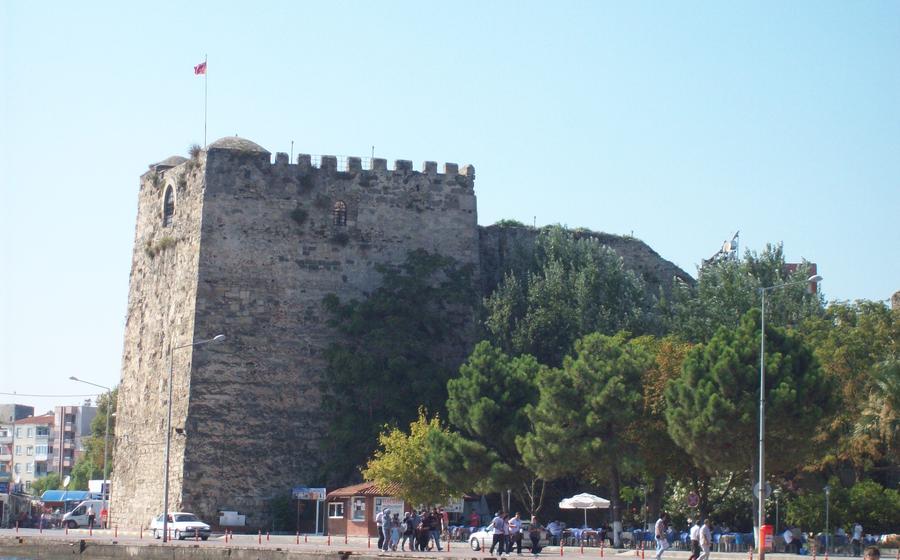
Boyabat Historical Turkish Bath
- History of the Boyabat Historical Turkish Bath
- Architectural style and features
- Cultural and social importance
- Unique Features
- Restoration and Preservation
- Local Craftsmanship
- Cultural Exchange
- Therapeutic Benefits
- Social Gathering Place
- Historical Context
- UNESCO World Heritage Site
- Local Cuisine
- Accommodations
- Transportation
- Hours of Operation and Admission Fees
History of the Boyabat Historical Turkish Bath
Nestled in the heart of Sinop, Turkey, the Boyabat Historical Turkish Bath stands as a testament to the rich cultural heritage of the region. Constructed in the 17th century, during the Ottoman Empire, the bath has borne witness to centuries of history, serving as a sanctuary for relaxation, rejuvenation, and social interaction. Its intricate architecture, stunning tilework, and well-preserved interiors offer a glimpse into the past, showcasing the artistry and craftsmanship of a bygone era.
Architectural style and features
The Boyabat Historical Turkish Bath is a prime example of Ottoman-era architecture, blending traditional Islamic design elements with local influences. Its domed roof, intricate carvings, and vibrant tilework create a visually captivating exterior that beckons visitors to step inside. The bath's interior is equally impressive, featuring a series of interconnected chambers, each serving a specific purpose. From the changing rooms to the hot and cold water pools, the layout of the bath is designed to provide a holistic bathing experience.
Cultural and social importance
The Boyabat Historical Turkish Bath has played a significant role in the cultural and social fabric of Sinop. Beyond its function as a place for bathing, it served as a social hub where people from all walks of life could gather, relax, and connect. The bath was a place for men to socialize, conduct business, and engage in political discussions, while women found respite from their daily routine and formed strong bonds with their peers. Its role as a community gathering place has ensured its enduring importance in the local culture.
Unique Features
The Boyabat Historical Turkish Bath stands out for its distinctive architectural elements and intricate artistic details. Its spacious interiors are adorned with mesmerizing tilework and carvings that showcase the exceptional craftsmanship of the era. The bath comprises several sections, including hot rooms, cold rooms, and relaxation areas, each adorned with unique tile patterns and motifs. Visitors can admire the intricate designs and vibrant colors that grace the walls, ceilings, and floors, creating a visually stunning and immersive experience. Additionally, the bath boasts a remarkable dome that allows natural light to flood the interior, enhancing the overall ambiance and providing a sense of serenity.
Restoration and Preservation
The Boyabat Historical Turkish Bath, having withstood the test of time, required extensive restoration efforts to preserve its original grandeur and historical significance. The restoration process, undertaken with meticulous care and respect for authenticity, faced several challenges.
One of the primary obstacles lay in sourcing the original materials used in the construction of the bath. The artisans and craftsmen dedicated to the restoration diligently searched for stones, tiles, and other elements that matched the originals in terms of composition, texture, and color. This attention to detail ensured that the restored bath retained its historical integrity and aesthetic charm.
Another challenge stemmed from the intricate designs and artistic elements that adorned the bath's interior. Skilled artisans specializing in traditional techniques meticulously recreated the intricate tilework, carvings, and decorative motifs, employing the same methods and materials as their predecessors. Their dedication brought new life to the exquisite details that had faded with time, restoring the bath's visual splendor.
The restoration process also required extensive structural reinforcement to ensure the bath's safety and longevity. While preserving the original architectural features, engineers incorporated modern techniques to strengthen the foundations and support systems, ensuring that the bath could continue to stand proudly for generations to come.
The successful restoration of the Boyabat Historical Turkish Bath exemplifies the commitment to preserving Turkey's rich cultural heritage. It stands as a testament to the dedication and expertise of the artisans, craftsmen, and historians who worked tirelessly to restore this architectural gem to its former glory.
Local Craftsmanship
The Boyabat Historical Turkish Bath stands as a testament to the exceptional craftsmanship of local artisans. Their skillful hands transformed ordinary materials into works of art, creating a harmonious blend of functionality and aesthetics. The intricate tilework adorning the walls and floors showcases their mastery of ceramics, with each tile meticulously placed to form mesmerizing patterns and vibrant colors. The delicate carvings on the marble columns and arches reveal the artisans' attention to detail, adding a touch of elegance to the bath's interior.
Local craftsmen employed traditional techniques and materials, ensuring that the bath remained faithful to its historical roots. They utilized locally sourced marble, renowned for its durability and natural beauty, to create the bath's impressive columns and basins. The intricate tilework was crafted using centuries-old ceramic techniques, with each tile hand-painted and glazed to achieve its vibrant hues. The artisans' dedication to preserving traditional methods ensured that the bath remained an authentic representation of Turkish craftsmanship.
Their expertise extended beyond construction to the restoration process. When the bath underwent renovation, local artisans played a crucial role in preserving its original character. They meticulously restored damaged tiles and carvings, ensuring that the bath's historical integrity was maintained. Their commitment to preserving the bath's unique features highlights the importance of local craftsmanship in safeguarding cultural heritage.
Cultural Exchange
The Boyabat Historical Turkish Bath offers a unique opportunity for visitors to immerse themselves in Turkish culture and connect with locals. As a traditional gathering place, the bath has played a significant role in fostering social interaction and community bonding for centuries. Visitors can engage in conversations with locals, learn about their daily lives, and gain insights into Turkish customs and traditions. This cultural exchange promotes understanding, appreciation, and respect for different cultures, creating a truly enriching and memorable experience for visitors.
Therapeutic Benefits
The Boyabat Historical Turkish Bath is not just a place to cleanse the body but also to rejuvenate the mind and spirit. Traditional Turkish beliefs emphasize the healing properties of the bath, particularly the therapeutic effects of hot water and steam. Bathing in hot water helps relax tense muscles, improve circulation, and alleviate pain. The steam opens up the pores, allowing toxins to be released from the body. Inhaling the steam can also help clear congestion and improve respiratory function.
Beyond the physical benefits, the bath offers a tranquil and serene environment that promotes relaxation and stress relief. The warm, humid air and the gentle sound of water create a soothing atmosphere that helps calm the mind and melt away worries. The bathing ritual itself, with its deliberate and mindful steps, encourages a sense of self-care and well-being.
Social Gathering Place
Throughout history, the Boyabat Historical Turkish Bath has served as a vibrant social hub, fostering a sense of community and belonging among locals. In the past, bathhouses played a crucial role in Turkish society, providing a space for people to socialize, exchange news, and strengthen their bonds. The communal nature of the bath encouraged interactions between individuals from different backgrounds, promoting social cohesion and a sense of unity.
Even today, the bath continues to be a place where people come together to relax, rejuvenate, and connect with others. Visitors can engage in lively conversations, share stories, and immerse themselves in the local culture. The bathhouse provides a unique opportunity for travelers to interact with locals and gain insights into Turkish traditions and customs. By preserving these traditional gathering spaces, we not only safeguard a piece of history but also nurture the social fabric that binds communities together.
Historical Context
The Boyabat Historical Turkish Bath stands as a testament to the rich bathing culture that has flourished in Turkey for centuries. Public baths have played a pivotal role in Turkish society, serving as places for cleansing, relaxation, and social interaction. The bathhouse in Boyabat is a living example of this tradition, offering a glimpse into the past while continuing to serve the community as a functional bathhouse.
Over the years, the bathhouse has undergone several renovations and restorations, each reflecting the changing tastes and styles of the time. The original construction showcased traditional Ottoman architectural elements, which were later complemented by intricate tilework and carvings during the Seljuk period. In the 19th century, the bath underwent a major renovation that incorporated European influences, resulting in a unique blend of architectural styles.
UNESCO World Heritage Site
The Boyabat Historical Turkish Bath holds a prestigious position on the UNESCO World Heritage List, a testament to its exceptional cultural and historical significance. To be included on this prestigious list, a site must meet stringent criteria, demonstrating outstanding universal value in terms of its cultural, historical, scientific, or artistic importance. The Boyabat bath erfüllt these criteria admirably, showcasing its unique architectural style, intricate tilework, and its role in shaping local traditions and customs. Recognizing the bath's global significance, UNESCO has acknowledged its importance in preserving and protecting this irreplaceable heritage for future generations.
Local Cuisine
A visit to the Boyabat Historical Turkish Bath is not complete without savoring the delectable local cuisine. The streets surrounding the bath are lined with charming restaurants and eateries, each offering a taste of traditional Turkish flavors.
Indulge in the iconic pide, a savory flatbread topped with various ingredients such as minced meat, cheese, or vegetables. For a hearty meal, try the manti, delicate dumplings filled with ground meat and served in a yogurt sauce.
Don't miss the köfte, succulent meatballs grilled to perfection and often served with rice or bulgur. And for a sweet treat, sample the künefe, a crispy pastry filled with shredded filo dough and melted cheese, drizzled with sweet syrup.
To quench your thirst, sip on ayran, a refreshing yogurt drink, or indulge in the aromatic Turkish coffee, a strong brew served with a side of Turkish delight.
Whether you prefer a quick bite or a leisurely meal, the culinary delights near the Boyabat Historical Turkish Bath will satisfy your taste buds and immerse you in the vibrant Turkish food culture.
Accommodations
When planning your trip to the Boyabat Historical Turkish Bath, finding suitable accommodations nearby is essential. The city of Sinop offers a range of options to suit different preferences and budgets.
For travelers seeking a luxurious stay, several upscale hotels provide modern amenities, comfortable rooms, and breathtaking views of the Black Sea. These hotels often feature spas, fitness centers, and fine-dining restaurants, catering to those who desire a pampering experience.
For a more budget-friendly option, numerous guesthouses and bed-and-breakfasts offer cozy accommodations within walking distance of the bath. These establishments often provide a more intimate and local experience, allowing visitors to interact with friendly hosts and learn about Turkish culture firsthand.
When selecting your accommodation, consider factors such as proximity to the bath, amenities, and your budget. Advance booking, especially during peak tourist season, is recommended to secure your preferred choice.
Transportation
Reaching the Boyabat Historical Turkish Bath is a breeze, with various transportation options to suit your needs. For those who prefer public transportation, local buses offer a convenient and affordable way to get there. The bath is well-connected by bus routes, making it easy to hop on and off.
For a more flexible option, consider renting a car. This allows you to explore the surrounding area at your own pace and visit other attractions in the region. Several car rental agencies are available in Sinop, offering a range of vehicles to suit your budget and preferences.
If you prefer a hassle-free experience, hiring a taxi is a great option. Taxis are readily available in Sinop, and the drivers are generally knowledgeable about the area and can take you directly to the bath.
No matter which transportation option you choose, getting to the Boyabat Historical Turkish Bath is easy and convenient. So, pack your swimsuit, relax, and prepare for a unique and rejuvenating bathing experience.
Hours of Operation and Admission Fees
The Boyabat Historical Turkish Bath is open to the public from 9:00 AM to 6:00 PM every day of the week. Admission fees are quite reasonable, with a standard ticket costing only 10 Turkish Lira (approximately 50 USD). Discounts are available for students, seniors, and groups of more than 10 people. Advance booking is not necessary, and visitors can simply walk in and purchase tickets at the entrance.
